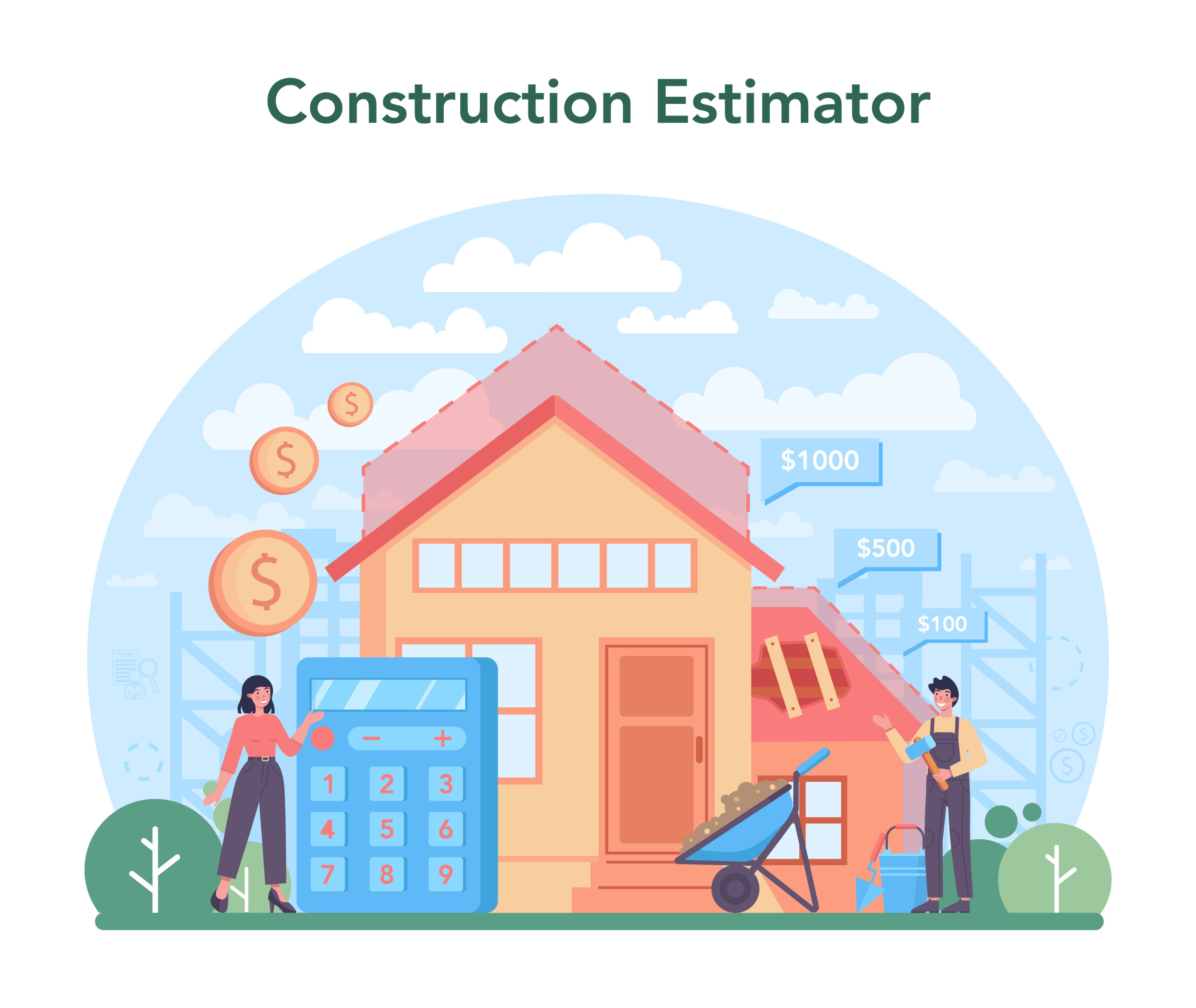An estimate is a rough calculation of expected costs, while a quote is a formal offer with specific prices for goods or services.
Understanding Estimates and Quotes
Estimates and quotes are two different terms used in business transactions to provide pricing information to customers. Here’s a breakdown of the key differences:
- Definition: An estimate is a rough calculation or approximation of the cost of goods or services. It is often provided when the final scope or requirements are not fully defined. A quote, on the other hand, is a formal offer that outlines the specific price for the goods or services requested by the customer.
- Level of Detail: Estimates typically provide a broad overview of the potential costs involved. They may include a range or a ballpark figure based on the available information. Quotes, on the other hand, provide a detailed breakdown of the costs, including itemized prices for specific goods or services.
- Binding Nature: Estimates are usually non-binding and subject to change. They serve as an initial assessment and are often used for budgeting or planning purposes. Quotes, on the other hand, are typically binding and represent a commitment to provide the goods or services at the specified price.
- Validity: Estimates often have an expiration date since they are based on the current circumstances and may change over time. Quotes also have a validity period, but they are more likely to remain consistent unless there are significant changes in the requested goods or services.
- Usage: Estimates are commonly used in situations where the project or service requirements are not yet fully defined, or for projects that involve uncertainties or variations. Quotes are used when the customer has provided clear specifications and is ready to proceed with the purchase.
- Conversion to Invoice: Estimates usually do not directly convert into an invoice. They serve as an initial step in the negotiation process. Quotes, on the other hand, can be easily converted into an invoice by formalizing the terms and conditions.
Understanding these distinctions between estimates and quotes is important in business transactions. By using the appropriate term and providing accurate pricing information, businesses can effectively communicate with their customers and avoid misunderstandings.
What is an Estimate?

An estimate is a calculated prediction of the anticipated cost of a project or service, which provides clients with a rough idea of how much they can expect to pay. It is typically prepared by analyzing the resources required, such as materials, labor, and time. Estimates play a crucial role in various industries, including construction, remodeling, and consulting, as they assist in giving clients an understanding of the potential expenses for a particular job. Unlike a quote, an estimate does not legally bind the provider to the proposed cost. Rather, it serves as an approximate figure that helps clients make informed decisions based on a reasonable estimation of the final cost.
When creating an estimate, the provider takes into consideration multiple factors, including the scope of work, complexity of the project, and market conditions. By carefully evaluating these aspects, the estimate can provide a calculated forecast of project costs. However, it is important to note that estimates may not be entirely accurate and can vary based on unforeseen circumstances or changes in project requirements.
In summary, an estimate is essentially a calculated forecast of project costs that offers clients a rough idea of the expenses they can anticipate. This non-binding proposition benefits both the provider and the client, enabling them to make informed decisions.
How is an Estimate Calculated?
An estimate is calculated by following a series of steps to provide an approximate cost for a project:
- Define the scope of the project and identify all the tasks and materials required.
- Break down each task into smaller components and determine the quantity or duration of each component.
- Estimate the cost of materials needed for each task, taking into account market prices and any discounts or bulk purchasing opportunities.
- Calculate the labor cost by considering the number of hours required for each task and the hourly rate of the workers.
- Factor in additional costs such as subcontracted services, permits, or equipment rentals.
- Sum up all the costs to obtain a total estimate for the project.
- Add a contingency or margin for unexpected expenses or changes in the project scope.
- Present the estimate to the client, ensuring that it is clear and transparent, and answer any questions or concerns they may have.
It’s important to note that an estimate is not a fixed price, but rather an approximation based on the information available at the time. It allows for flexibility and adjustments as the project progresses and additional factors come into play.
When is an Estimate Used?
When a company or individual needs to provide a rough approximation of the cost for a project or service, an estimate is used. It is employed to give an idea of the potential expenses involved. An estimate is typically used in situations where the final price is not yet determined, or when there are uncertainties that may affect the overall cost. This can include projects that are still in the planning or proposal stage.
An estimate is used to provide a general understanding of the potential expenses and is not a legally binding agreement. It allows for flexibility in pricing and is subject to change based on further information or changes in the project scope. Estimates are commonly utilized in industries such as construction, remodeling, or any project-based business.
The purpose of an estimate is to give an indication of the cost involved, assisting individuals or businesses in making informed decisions regarding budgeting or financial planning. It helps in assessing the feasibility of a project and determining if it aligns with financial expectations.
When is an estimate used? In situations where the cost of a project is uncertain or when there is a need for preliminary financial planning. It provides a rough approximation of expenses to guide decision-making and budgeting processes.
What is a Quote?
A quote is a formal offer made by a business to provide goods or services at a specific price. It is a document that outlines the cost of the products or services requested by the customer. The quote is prepared by the business and is based on the customer’s specific requirements and the current market conditions.
The process of preparing a quote involves determining the cost of materials, labor, and other expenses associated with providing the goods or services. The quote also includes any applicable taxes or additional charges. It is important for the quote to be accurate and transparent, providing a clear breakdown of the costs involved.
A quote is used when a customer wants to know the exact price they will need to pay for a particular product or service. It allows the customer to make an informed decision and compare prices from different suppliers or service providers. Once a quote is accepted by the customer, it serves as a contract between both parties, outlining the agreed-upon terms and conditions.
In summary, a quote is a formal offer that provides a specific price for goods or services. It is prepared by the business and used by customers to make informed decisions and compare prices.
How is a Quote Prepared?
When preparing a quote, there are several steps that need to be followed:
- Gather necessary information: Before preparing a quote, gather all the necessary details about the project or service to be provided. This may include specifications, quantities, deadlines, and any additional requirements.
- Calculate the cost: Determine the cost of materials, labor, and any other expenses associated with the project. Use precise figures or percentages to provide accurate cost estimates.
- Add profit margin: Determine the profit margin that needs to be added to cover overhead costs and generate profit. This can be a fixed percentage or a specific dollar amount.
- Include any additional charges: If there are any additional charges such as taxes, shipping fees, or customization fees, make sure to include them in the quote.
- Prepare the quote document: Create a professional document that clearly outlines the scope of work, pricing details, payment terms, and validity period of the quote.
- Review and finalize: Double-check all the information in the quote to ensure accuracy. Make any necessary adjustments or revisions before finalizing and sending it to the customer.
- Communicate the quote: Send the quote to the customer through email or any other preferred method. Provide any additional explanation or clarification if needed.
Following these steps will help ensure that the quote is prepared accurately and effectively communicates the pricing details to the customer.
How is a Quote Prepared?
When preparing a quote, there are several steps that need to be followed:
- Gather all the necessary details about the project or service to be provided in order to prepare a quote. This may include specifications, quantities, deadlines, and any additional requirements.
- To accurately estimate the cost, calculate the expenses associated with the project, such as materials, labor, and other costs, using precise figures or percentages.
- Make sure to add the required profit margin to cover overhead costs and generate profit. This can be a fixed percentage or a specific dollar amount.
- Include any additional charges that may be applicable, such as taxes, shipping fees, or customization fees, in the quote.
- Prepare a professional quote document that clearly outlines the scope of work, pricing details, payment terms, and validity period of the quote.
- Prior to finalizing and sending the quote to the customer, carefully review all the information to ensure accuracy. Make necessary adjustments or revisions if needed.
- Send the quote to the customer through email or any preferred method of communication. Provide additional explanation or clarification as necessary.
Following these steps will ensure the accurate preparation of the quote and effective communication of the pricing details to the customer.
When is a Quote Used?
A quote is used when a customer requests a specific price for a particular product or service. It is utilized when there is a need for a formal agreement on the pricing details of a transaction. This is especially important when dealing with significant financial investments or projects. A quote provides the customer with an accurate and fixed cost for the desired goods or services.
Key Differences Between Estimates and Quotes
Pricing Accuracy
To discuss the sub-topic of “Pricing Accuracy,” I have created a table that highlights the importance of accurate pricing in estimates and quotes.
| Estimate | Quote | |
| Pricing Accuracy | Estimates provide a rough approximation of the costs involved in a project or service. The pricing is based on available information at the time and may have some room for flexibility. | Quotes offer a more accurate and precise pricing for the project or service. The costs are carefully calculated, taking into account all relevant factors, to provide a specific and fixed price. |
In an estimate, the pricing accuracy is lower as it allows for adjustments based on unforeseen circumstances or changes in requirements. It gives an idea of the potential costs involved but may vary during the course of the project.
On the other hand, a quote ensures higher pricing accuracy. It reflects a thorough assessment of all the factors involved and provides clients with a fixed and definite price. This accuracy helps clients make informed decisions about the project’s affordability and plan their budget accordingly.
Choosing between an estimate and a quote depends on the situation and the level of pricing accuracy required. If pricing accuracy is crucial and there is a need for a precise budget, a quote is the preferred choice. If flexibility is desired, an estimate allows for adjustments and changes along the way.
Legal Obligation
When it comes to legal obligation, there is a crucial distinction between estimates and quotes. An estimate, which is based on the scope of work or services provided, does not legally bind either party to a specific price or commitment. It merely provides an approximate cost. Conversely, a quote establishes a legal obligation. It is a formal offer with a fixed price and terms that the provider must honor if the customer accepts it. Quotes are often more detailed than estimates, providing a clear breakdown of costs and deliverables.
It is essential to recognize that legal obligations can vary depending on the jurisdiction and industry. Some businesses or professions may have specific regulations governing the use of estimates and quotes. Understanding and complying with these obligations is vital to avoid potential disputes or legal consequences.
Flexibility of Pricing
The importance of flexibility of pricing cannot be overstated when it comes to choosing between an estimate and a quote. The ability to adjust the price based on various factors or circumstances is what defines this flexibility.
In terms of flexibility, estimates excel as they allow for negotiation and adjustments. They are rough calculations of project or service costs, thereby providing room for flexibility in pricing. The final price can vary depending on additional requirements or changes in the scope of work.
On the other hand, quotes present a fixed price for a specific product or service. The price mentioned in a quote is generally non-negotiable, based on a thorough analysis of the project. This fixed pricing ensures clarity and avoids any unexpected additional costs.
Below is a table highlighting the differences in flexibility between estimates and quotes:
| Aspect | Estimate | Quote |
|---|---|---|
| Pricing | Flexible | Fixed |
| Negotiation | Possible | Not usually |
| Scope changes | May affect | Usually fixed |
| Additional costs | Can be adjusted | Already included |
When considering the flexibility of pricing, it is crucial to evaluate the specific needs of the project or service. If there is a possibility of changes or uncertainties, an estimate might be more suitable as it allows for potential adjustments. However, if the scope of work is well-defined and there is no room for changes, a quote provides a clear and fixed price.
Validity Period
| Validity Period | Incorporating the concept of validity period is crucial when choosing between an estimate and a quote. It pertains to the designated time frame within which the price presented in the estimate or quote remains applicable. To provide clarity, it is highly recommended to utilize a table to clearly communicate the validity period information. |
| Estimate | Quote |
| Usually has a shorter validity period. | Typically has a longer validity period. |
| Price may change based on market fluctuations. | Price is generally fixed for the duration of the validity period. |
| May not require a formal agreement. | Often requires the customer to accept the quote to proceed with the service. |
Pro-tip: Always communicate the validity period clearly to your customer to avoid any misunderstandings. It is important to have a clear understanding of the validity period and its implications to ensure smooth and transparent transactions.
Choosing Between an Estimate and a Quote
When it comes to choosing between an estimate and a quote, there are several factors to consider. We’ll dive into these considerations to help you understand which option is right for you. From understanding the factors that play a role to effectively communicating with your customer, we’ve got you covered. So, let’s explore how to make the best choice for your business and ensure customer satisfaction throughout the process.
Factors to Consider
- In considering whether to choose an estimate or a quote, there are several factors to consider:
- Pricing accuracy: Estimates are generally rough approximations of the cost, while quotes provide a more accurate and specific price.
- Legal obligation: Estimates are not legally binding, while quotes typically have a legal obligation attached to them.
- Flexibility of pricing: Estimates allow for some flexibility in pricing, while quotes have fixed prices that cannot be changed without renegotiation.
- Validity period: Estimates do not have a set expiration date, while quotes have a specific period of validity, after which they may no longer be valid.
When choosing between an estimate and a quote, you should consider these factors and determine which is more suitable for your specific situation. It is important to communicate with the customer and understand their needs and expectations before making a decision. By considering these factors and effectively communicating with the customer, you can ensure that you provide them with the most appropriate pricing information for their project.
Selecting the Right One
| Factors to Consider | Estimate | Quote |
| Pricing Accuracy | An estimate provides a rough approximation of the cost. | A quote offers an accurate and specific price for the project. |
| Legal Obligation | An estimate does not create a legally binding agreement. | A quote is a formal offer that can be accepted by the customer to create a legally binding contract. |
| Flexibility of Pricing | An estimate allows for potential price adjustments based on changes in the project scope. | A quote provides a fixed price that is not subject to change unless mutually agreed upon. |
| Validity Period | An estimate is usually valid for a shorter period of time and may require reevaluation after expiration. | A quote has a specific validity period stated, and the price remains firm during that time. |
When selecting the right one between an estimate and a quote, consider the project’s requirements, budget, and timeline. If you need flexibility in pricing and are still finalizing project details, an estimate may be suitable. If you want an accurate and fixed price with clear terms and commitment, a quote is the better choice. Assess the legal implications and your preferences for certainty. Communication with the customer is essential to understand their expectations and ensure alignment. Always review and compare the terms, conditions, and pricing of both estimates and quotes to make an informed decision that suits your needs.
Communication with the Customer
Effective communication with the customer is essential when providing estimates or quotes. Ensuring effective communication is crucial for both parties to be on the same page and have a clear understanding of the scope and cost of the project. Here are some key considerations for effectively communicating with the customer:
1. Active listening: It is important to actively listen to the customer’s needs and requirements. Encourage the customer to share their expectations and provide any necessary clarifications.
2. Clear and concise explanations: Using simple language, clearly explain the details of the estimate or quote. Avoid using technical jargon that may confuse the customer.
3. Transparency: Be transparent about the pricing breakdown and any additional charges that may apply. This approach will help the customer make informed decisions.
4. Timely responses: It is imperative to respond promptly to any questions or concerns the customer may have. This demonstrates professionalism and a commitment to customer satisfaction.
5. Flexibility: Be open to discussing alternatives and options that may better meet the customer’s needs and budget. Foster a collaborative and mutually beneficial relationship.
To enhance communication with the customer, consider implementing tools such as email, phone calls, or in-person meetings. Providing visual aids or examples can also help convey information more effectively. Always remember, effective communication is key to building trust and ensuring a positive customer experience.
Frequently Asked Questions
What is the difference between an estimate and a quote?
An estimate is a rough guess of the cost of a job based on limited information, while a quote is an exact price that cannot be changed once accepted by the customer.
Can an estimate be used as a legal standpoint for price?
No, estimates are informal and cannot be used as a legal standpoint for price. They can change as more information is gathered or unexpected complications arise.
Are quotes legally binding?
Yes, quotes are formal contracts between the business and the customer. Once accepted, they cannot be changed without a new agreement. Quotes provide customers with peace of mind and can be used as legal standpoints for price in case of a dispute.
When should I use an estimate?
Estimates are useful when a customer needs a rough idea of the cost before committing to a project. They are typically used as a starting point when limited information is available and can be adjusted upward or downward due to changes in scope.
What information should be included in a quote?
A quote should provide the exact price for a job and break down the full cost of the project. It should also define the project’s scope and timeline.
How can GoCardless help with payment collection for quotes and invoices?
GoCardless can help automate payment collection and reduce administrative tasks related to chasing invoices. By setting up recurring payments, small businesses can ensure timely and hassle-free payments from clients.
Image Credits
Featured Image By – cookie_studio Freepik
Image 1 By – vector4stock Freepik








